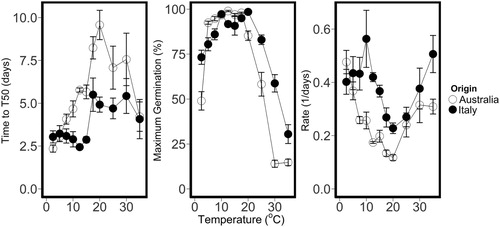Figures & data
Table 1. Subterranean clover cultivars, subspecies, seed lot and reported mean seed weight (mg) and commercialisation year of seeds used. Letters B, S and Y denote subspecies: B = brachycalycinum, S = subterraneum and Y = for yanninicum. (Nichols* et al. Citation2013).
Figure 1. Cumulative germination percentage for ‘Narrikup’ subterranean clover seeds incubated at 10°C (▴) and 2.5°C (•).
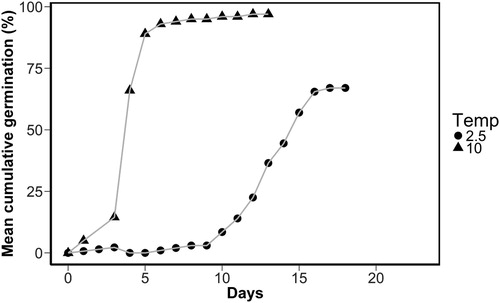
Figure 2. Number of days to T50 for ‘Antas’, ‘Denmark’, ‘Monti’ and ‘Narrikup’ subterranean clover seeds estimated by Gompertz and Approx functions (r = 0.99) for individual experimental units at 2.5 (□), 5 (○), 7.5(△), 10 (+) 12.5 (X), 17.5 (▽), 20 (![]()
 ) and 35°C (
) and 35°C (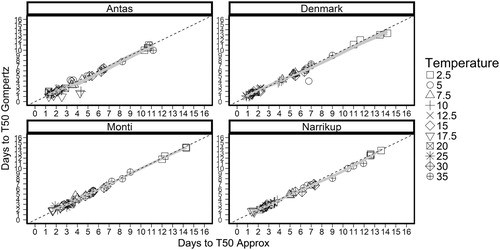
Figure 3. Mean maximum germination percentage for ‘Antas’ (○), ‘Denmark’ (△), ‘Monti’(□) and ‘Narrikup’ (![]()
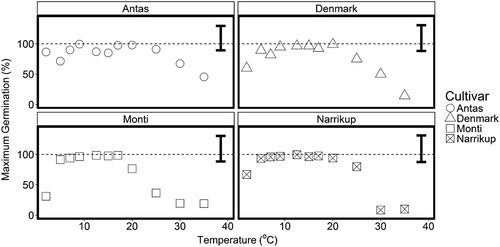
Figure 4. Mean cumulative germination percentage (%) for subterranean clover cultivars ‘Antas’, ‘Denmark’, ‘Monti’ and ‘Narrikup’ at different incubation temperatures 2.5 (□), 5 (○), 7.5(△), 10 (+) 12.5 (X), 17.5 (▽), 20 (![]()
 ) and 35°C (⊕). Error bars are the maximum standard error of the mean for final germination percentage.
) and 35°C (⊕). Error bars are the maximum standard error of the mean for final germination percentage.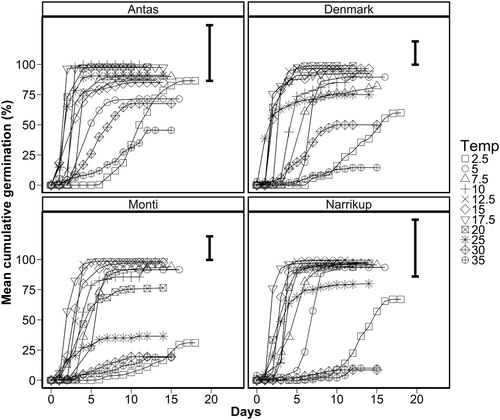
Figure 5. Mean number of days to T50 for ‘Antas’ (○), ‘Denmark’ (△), ‘Monti’ (□) and ‘Narrikup’(![]()
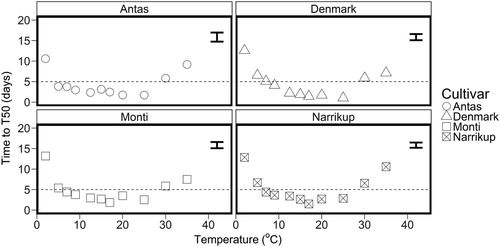
Figure 6. Germination rate (1/ days to T50) for ‘Antas’ (○), ‘Denmark’ (△), ‘Monti’ (□) and ‘Narrikup’(![]()

Figure 7. Mean number of days to T50, maximum germination percentage (%) and germination rate (1/days) for subterranean clover cultivars ‘Monti’ (yanninicum) ‘Narrikup’ (subterraneum) originated in Australia (○) and Antas’ (brachycalycinum) and ‘Denmark’ (subterraneum) originated in Italy (•) tested at Field Research Centre, Lincoln University, New Zealand. Time to T50: P = 0.0002, LSD = 0.9; maximum germination (%):P = 0.08, LSD = 9.0; Rate (1/days to T50): P < 0.001, LSD = 0.06. Error bars represent the standard error.
